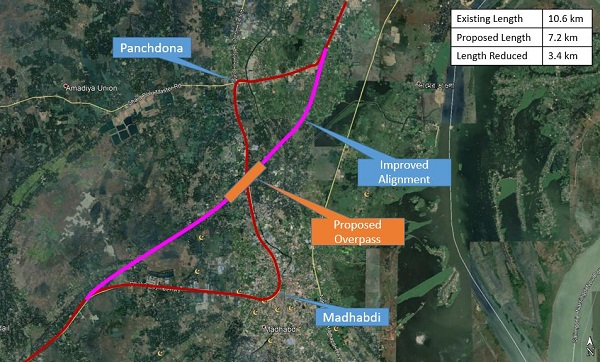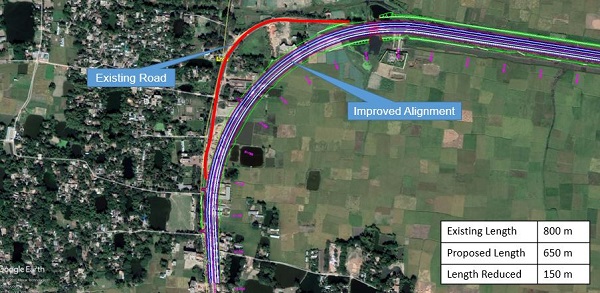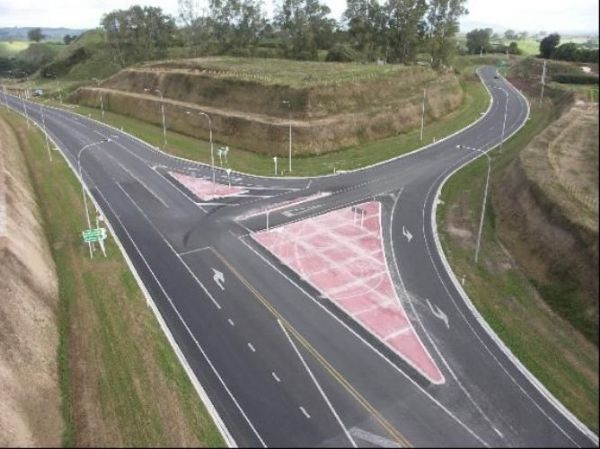





Realignment - Horizontal
Unexpectedly tight horizontal bends can lead to crashes when drivers try to negotiate them at high speed.
On narrow roads, vehicles may cross into the path of an approaching vehicle on tight bends, or they may travel onto shoulders and pedestrian areas.
There are several ways in which the horizontal alignment of a road may be modified to improve safety. These include increasing bend radius, providing transition bends (to facilitate the gradual transition of steering from straight sections of road to bends), removing compound bends or improving superelevation.
The horizontal alignment of intersection approaches may be realigned to improve sight distance or to reduce approach speeds and reinforce priority at the intersection (for example, at a Y-junction).
- Reduced risk of head-on crashes.
- Reduced risk of run-off-road crashes.
- Better traffic flow.
- Road realignment is costly and time consuming because it usually involves rebuilding a section of road.
- Horizontal curve realignments require considerable design and construction effort. These projects may also require the purchase of land.
- Horizontal realignments often include lane widening, shoulder improvement, and delineation treatments.
- Increased speed with sections of realignment can lead to safety issues at the interface with the existing road. In general, the transition area should not be located at an area of poor visibility. Drivers should be alerted to reduce speed and adapt to the existing road of lower alignment standard.
- Realignment can have significant environmental impacts due to increased footprints and earthworks
- Realignment can release sections of the existing road for other beneficial purposes.
The Star Rating Demonstrator is a freely available tool with the iRAP online software, ViDA. With the Star Rating Demonstrator, it is possible to explore the impact that this Safer Roads Treatment has on risk.
Treatment Summary
Costs | High |
Treatment life | 20 years + |
Potential casualty reduction | 25-40% |
Case Studies
Related Images
 Poor horizontal alignment in Kenya. Image credit: iRAP
Poor horizontal alignment in Kenya. Image credit: iRAP Example of a planned realignment of the road in Bangladesh. Image credit: Roads and Highways Department
Example of a planned realignment of the road in Bangladesh. Image credit: Roads and Highways Department Example of a planned realignment of the road in Bangladesh. Image credit: Roads and Highways Department
Example of a planned realignment of the road in Bangladesh. Image credit: Roads and Highways Department An upgraded intersection with protected turn lane, involving horizontal and vertical realignment. Image credit: ARRB Group
An upgraded intersection with protected turn lane, involving horizontal and vertical realignment. Image credit: ARRB Group










